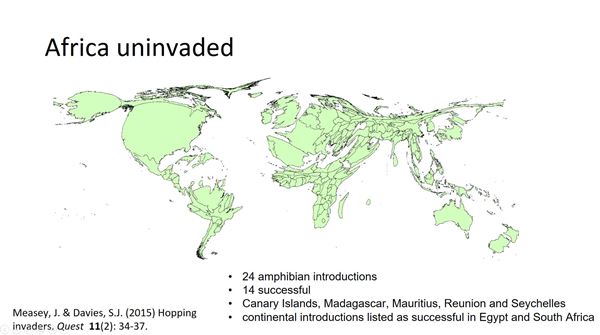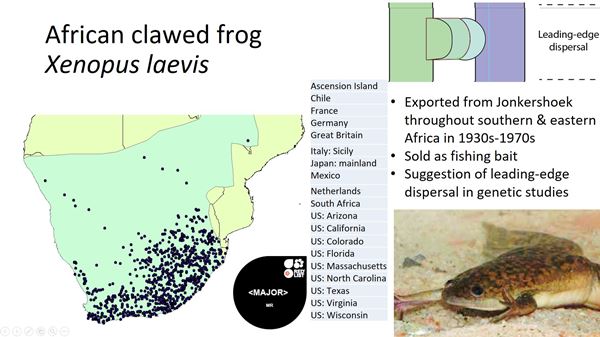A new model for publishing without publishers - the blockchain journal
The problem
There are growing problems with publishers. Publishing has become very expensive for scientists, and the public who fund science; unwittingly funding many publishers. I’ve discussed the history of scientific publishing before (here), and explained how commercial publishers have had a role right from the very beginning. This relationship continues to the present day, but while the origins saw learned societies commissioning publishers and then distributing their content, today the publishers have climbed into the driving seat conceiving and owning many of the current journal titles. This is not to say that there are no scholarly societies that still dictate terms to publishers (The British Ecological Society, BES, do this very well), but they are few and far between, and even when society journals are involved, the goliath publishing companies easily outweigh any control that they might have once possessed (and I’m speaking from personal experience – see here and here).
The result is that publishers have become gigantic corporations that now dictate to the scientists that produce, edit and review all of the content. They charge incredibly high fees to anyone who might want to read the publicly funded content. The budgets of university libraries run into USD 100 000s just to access content. The result is that many universities can’t afford all of the content that their researchers need. Publicly funded content, and by that I mean that you dear reader are paying for the original science of the content in your taxes (yes, you all pay taxes, even if it’s only VAT), and then you pay a second time for the researchers (who themselves produced the content) to access the content. Who benefits from the fact that you pay twice? The publishers. Why aren’t you upset about this? Probably because you are unaware. But if you are upset, then join in the discussion to decide how to emancipate ourselves from the publishers who are merrily munching on through this publicly funded cash cow.
What do publishers do?
The publishers would claim that they do an awful lot. All they really do it pay for the layout and printing of journals. These days ‘printing’ really means hosting electronic pdfs only, as there’s very little paper that’s printed, and you can be sure that paper subscribers now pay the extra cost of any additional fees. The layout from the manuscript (most often a MS Word doc) into a pdf does take some skill and talent, although nothing like what you might expect given how much the publishers charge. You can be sure that they don’t pay much for this service as almost all layout is done in India, Bangladesh, Sri Lanka, etc. Quality can be good, but more often quality control is completely lacking. Most authors have stories of how manuscripts have come back mangled, although my own impression is that the worst days appear to be over.
What is publishing then?
Once publishers have ‘printed’ the manuscript, they ‘publish’ it by placing it behind a paywall on their website. I would be the first to admit that there are massive costs in doing this properly, and big journal companies have invested a lot to do this very well. The electronic hosting of journals is (in my opinion) truly excellent, except for that paywall. However, once they’ve set this system up, adding another 10 or 20 journals comes at practically no cost compared to the revenue that each one can be expected to gain.
To get behind that paywall, university libraries need to subscribe. Publishers bundle journals together and sell subscriptions at very high prices. If you are inside the university IP address, this access should be seamless. If you are outside, you might need to log in through your university’s library.
So far, the publisher hasn’t produced any content. The scientific content has been produced by the scientist at the cost of the public purse. The editing and peer review (see here) has all been done by the scientists, which has also cost the public purse but has been completely free to the publisher. OK, so there are some small costs associated with manuscript handling software subscriptions that the publishers normally pay. The publisher has also paid for the typesetting (although they’ve done this as cheaply as possible - see above), and they’ve paid for the severs that distribute the pdfs maintaining that all important paywall. What else? Nothing else. Now they simply charge everyone to look at the content (and because it’s by subscription), actually charge everyone whether or not they are looking at the content.
'Open access is one of the best scams that publishers have come up with'
Open Access
Yes, there’s a new scam in town. Open access appeared to be a great initiative that acknowledged that everything should be free to view. Neither scientists nor the public that fund them should be barred from accessing the knowledge that they produce. What could be wrong with this?
So what is open access?
Open access is probably one of the best scams that the publishers have come up with to date. Now the scientists pay for making their own content open for anyone to read. They pay a once off fee to the publishers to typeset the manuscript and host it on their site without a paywall. And how much do the publishers want for this service. Prices start from USD 1000 and go up to around USD 10 000.
The money comes from the funds that would otherwise be reserved for conducting science. So now the money for research goes directly into the pockets of the publishers upfront. Money that ultimately comes from you as tax payers goes directly to publishers. Still happy?
So does that mean that these journals are now free?
No. Some articles in the journals are free, but the universities are expected to subscribe to those same journals at ever increasing prices because much of the rest of the content is still behind the paywall. This is becuase most authors cannot afford to pay the exhorbitant fees charged by the journals (although some countries now have this payment as mandatory, they and their scientists are still in a minority). There are some journals that are entirely open access. This is all well and good (see here for the PeerJ model). But paying for open access has not reduced the cost of access to scientific journals for libraries. This cost constantly goes up. Open access was a brilliant scam by the publishers, because for much of this content we pay not twice but thrice!
The blockchain journal - a solution?
So we need a new way, without publishers – what do I suggest?
First, we have to forget about the layout. There is a real cost to typesetting of scientific papers, and if we are to get rid of the publishers, then I think we need to start forgetting about the fancy layout to which we’ve become accustomed. This will mean putting some vanity on the back burner, or allowing individuals to make their own manuscripts attractive. It’s actually not that hard to do this with many of the LaTex tools freely available online (find out more here). It is even the sort of thing that we could pay our own graduate students to do.
Next, we need to work out the distribution issues. This is actually really simple. Our libraries already have everything that we need to distribute our manuscripts. They maintain and handle servers. They handle thousands of requests from users every day, distributing their own content (e.g. theses) to users all over the world. So our own university libraries could become our distributors.
I also suggest that to make the distribution truly international, in the same way that we’ve become used to journals being global, we can make use of blockchain technology to have all university libraries host all papers for a particular journal (I suggested this back in October 2017, and the idea has been growing on me). The buy-in could be at the level of the journal editor’s home institutions allowing for local, national and international titles as the editors are distributed. The reputation then sits back with the editors of the content and their institutions that employ them and host their content.
Lastly, we have to take back control. We need to start this new model moving. How to do this? I think it will take a society that is already in a commanding position to leave publishers and use the money that they’ve earned to setup the basis of the blockchain journal. It will take some initial investment, but organisations (like BES) have already made so much money from their deals with publishers that they can well afford to leave them behind.
Once the revolution has started. Watch the scientists leave the publishers behind. We really don’t need them. They have been taking your money for far too long. They have had their good times. Once we don’t depend on them, we may even be able to go back to using their services, but at a more reasonable rate that doesn’t cost us the price of our own research.



